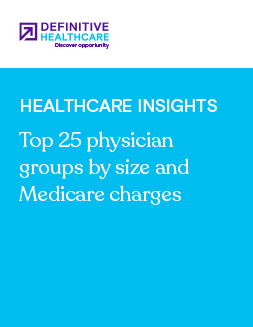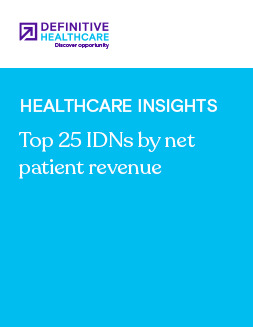Healthcare Insights
Top 10 ambulatory surgery center service line shifts from hospitals
Ambulatory surgery centers (ASCs) offer an alternative site for physicians to perform procedures in an outpatient care setting. These centers have grown in prominence as they provide a more convenient environment for certain procedures, often with a focus on efficiency and cost-effectiveness.
While ASCs are commonly used for procedures in specialties such as gastroenterology and ophthalmology, other specialties, including cardiology and vascular surgery, still predominantly take place in hospitals. These procedures are often more complex, requiring extensive monitoring, specialized equipment, or prolonged recovery periods.
The shift of certain surgeries to Ambulatory Surgery Centers (ASCs) is expected to continue as the Centers for Medicare and Medicaid Services (CMS) expands the list of ASC-covered procedure list (CPL).
Using data from the Definitive Healthcare Atlas All-Payor Claims Dataset, we created this list of the top 10 subservice lines that have experienced the highest shift in services from hospitals to ASCs from 2016 to 2024.
| Rank | Subservice line | Explore dataset |
|---|---|---|
| 1 | Colonoscopy | Explore |
| 2 | Esophagogastroduodenoscopy (EGD) | Explore |
| 3 | Other surgery, ortho (trigger finger release, tenodesis, and others) | Explore |
| 4 | Lens & cataract procedures | Explore |
| 5 | Arthroplasty, knee | Explore |
| 6 | Arthroscopy, knee | Explore |
| 7 | Incision & drainage | Explore |
| 8 | Arthroplasty, hip | Explore |
| 9 | Excision, skin | Explore |
| 10 | Peripheral nerve decompression | Explore |
Fig. 1. Data is from the Definitive Healthcare Atlas All-Payor Claims Dataset. Rank is based on patients seen market growth. Accessed April 2025.
What service lines are experiencing the highest shifts to ASCs?
Using Definitive Healthcare data, we’ve identified the top 10 subservice lines that have experienced the greatest shift in services from hospitals to ACSs from 2016 to 2024, based on patient growth. This ranking highlights the increase in the number of individual patients who have received specific procedures during this period.
Colonoscopies and esophagogastroduodenoscopies (EGD) top the list, reflecting an ongoing trend of patients opting for minimally invasive, outpatient procedures.
Other notable subservice lines include orthopedic surgeries such as knee and hip arthroscopies. Additionally, procedures like lens and cataract surgeries, peripheral nerve decompressions, and skin excisions are also experiencing a shift from hospital settings to ASCs.
This shift is reshaping the landscape of outpatient care, with ASCs increasingly becoming the go-to destination for various surgical services, especially in high-demand, low-risk procedures.
What has led to service lines shifting to ASCs?
The shift of service lines to ASCs is being driven by a combination of factors that align with the evolving demands of healthcare delivery.
Advancements in minimally invasive procedures, such as improved endoscopy techniques and robotic-assisted operations, have made complex procedures more feasible in outpatient settings.
ASCs are also typically more cost-efficient than hospitals, with lower overhead allowing them to offer care at a reduced cost to both payers and patients. Moreover, around half of ASCs are now physician-owned, and this shared ownership model provides financial incentives for physicians to steer their patients to outpatient settings.
Policy changes have also played a key role. The Centers for Medicare and Medicaid Services (CMS) has expanded its coverage of ASC-based procedures, including changes to the Inpatient-Only (IPO) list and the growth of the ASC Covered Procedures List (CPL), allowing more procedures to be performed outside hospitals.
Payers, motivated by the cost-effectiveness of ASCs, are increasingly encouraging their use, while patients are drawn to the convenience associated with ASCs. As reimbursement models evolve toward bundled payments and value-based care, ASCs present an attractive option for cost containment while maintaining high-quality outcomes.
In short, the movement of services to ASCs is a multifaceted trend driven by advancements in medical technology, evolving reimbursement structures, growing payer and patient demand for cost-effective care, and policy support that collectively make ASCs a viable option for healthcare delivery.
Learn more
Healthcare Insights are developed with healthcare commercial intelligence from the Definitive Healthcare platform. Want even more insights? Start a free trial now and get access to the latest healthcare commercial intelligence on hospitals, physicians, and other healthcare providers.



